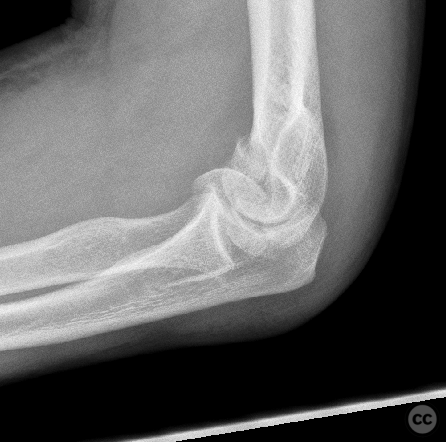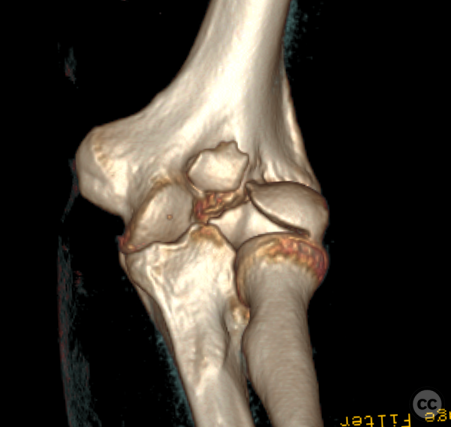Dubberley 2A capitellar and lat trochlear shear injury
Score and Comment on this Case
Clinical Details
Clinical and radiological findings: Is a case of a 55 year old man falling at the mystic fall on to the arm who was referred from another facility to our care several days post injury in an above splint. This was a closed injury and neurovascularly intact. The preliminary plain film imaging suggests a displaced capital shear injury. This was supplemented with a CT scan for preoperative planning. Here we can see a Dubberly type 2 injury with minimal dorsal extension so I would consider this an A subtype, however there is some comminution of the capitellar fragments which may prompt subclassification as B subtype. For me the significance of the subclassification is simply to predict the integrity of the dorsal cortex which has implications for the stability of simple screw fixation.
Preoperative Plan
Planning remarks:
Surgical Discussion
Operative remarks:This case was dancer pine with the arm draped 3li to the side of the patient on a mobile on table. The surgical approach was an extended lateral approach h&m over the lateral epicondyle. This provides excellent access to the intra-articular aspect of the anterior joint facilitating retrieval and reduction of the approximately displaced fragments. The fragments were provisionally fixed with kirschner wires before definitive fixation with a combination of headless screws and posteroanterior cannulated screws. The long lateral to medial screw acted as a type of jail screw secondarily stabilising the other Screwfix station. The suture anchors R4 refixation of the extensor origin from the lateral epicondyle which was partially reflected as part of the surgical exposure. This patient went on to unremarkable union and consolidation with excellent range of motion of 0-5-120°.
Search for Related Literature

Dr Ed Oates
- Germany , Schleswig Holstein
- Area of Specialty - General Trauma
- Position - Specialist Consultant

Industry Sponsership
contact us for advertising opportunities













Article viewed 755 times
14 Nov 2022
Add to Bookmarks
Full Citation
Cite this article:
Oates, E.J. (2022). Dubberley 2A capitellar and lat trochlear shear injury. Journal of Orthopaedic Surgery and Traumatology. Case Report 36028481 Published Online Nov 14 2022.